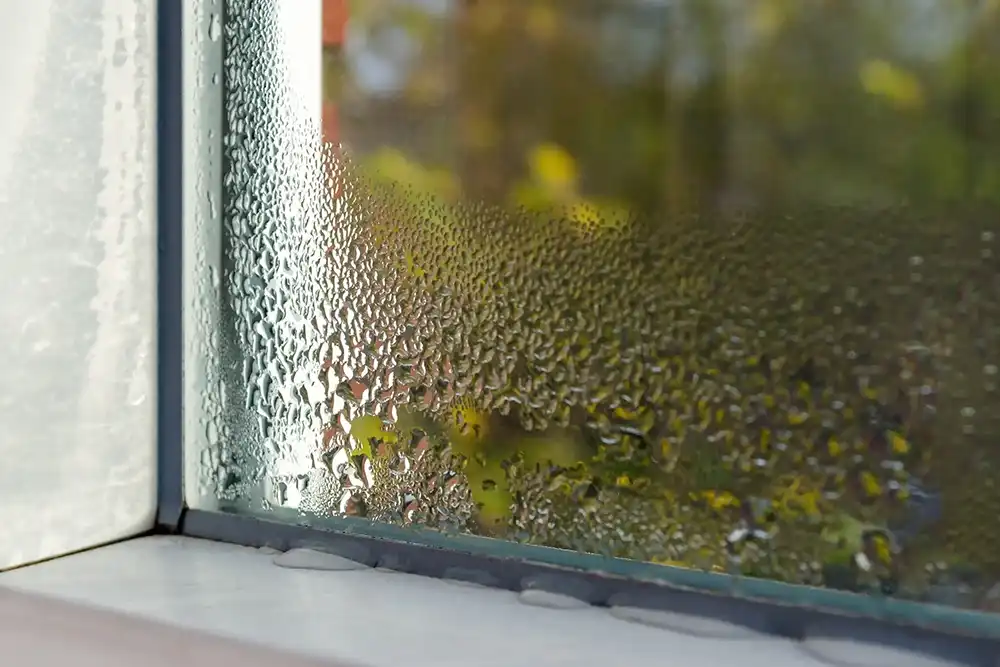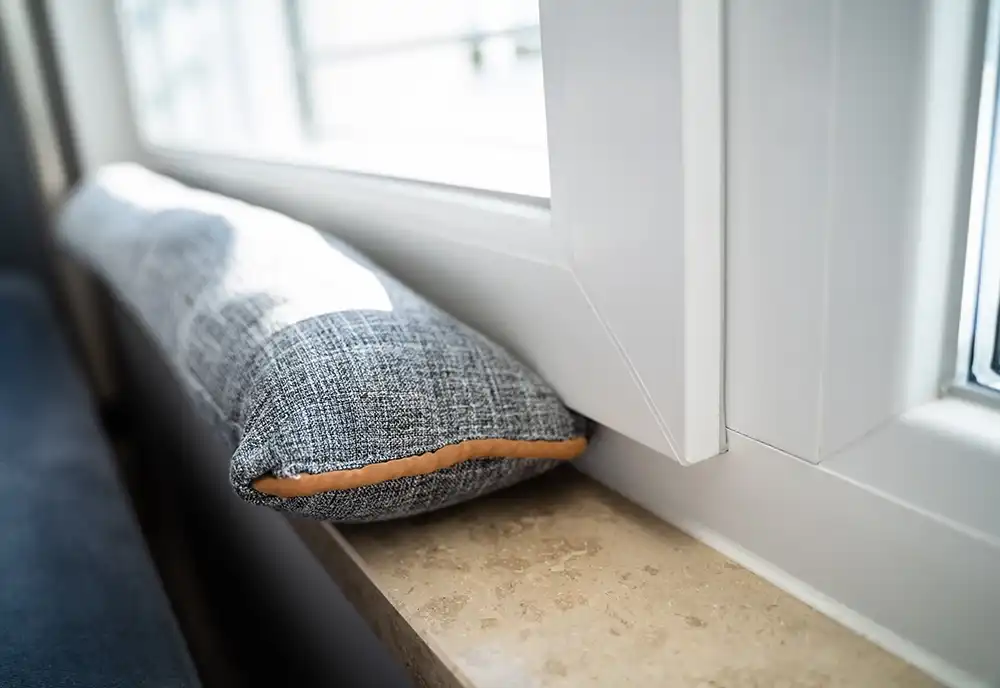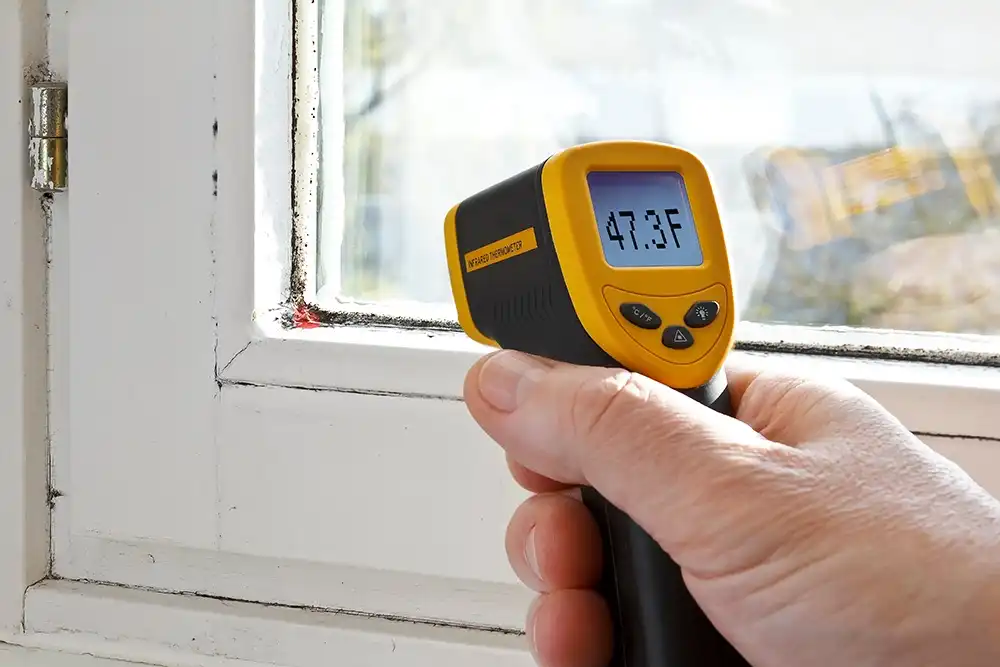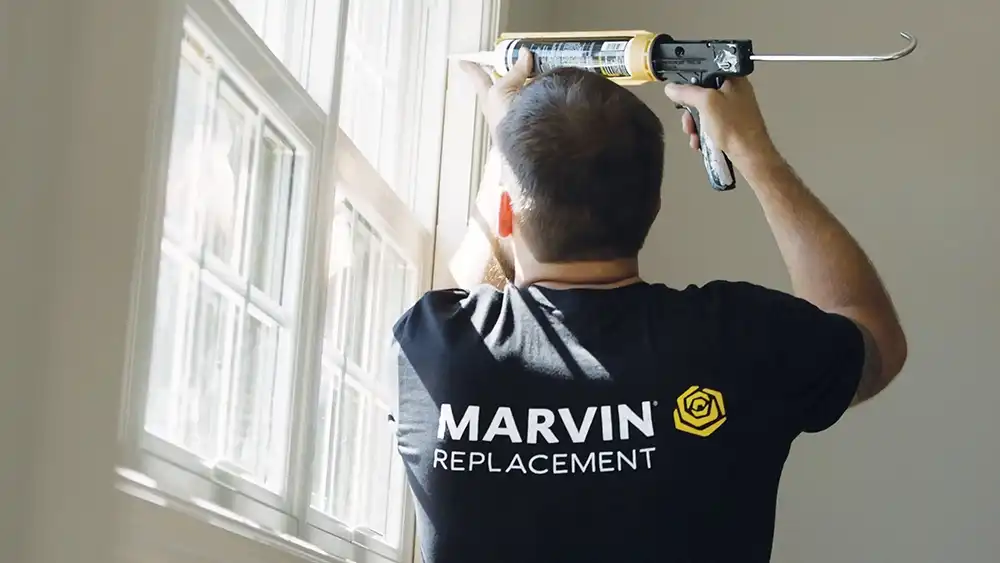
15 November 2024
Moisture and Window Condensation: Causes and Prevention
Window condensation can seem alarming, but it doesn't always signal a problem. It's a visible sign of moisture in the air reacting with cooler window surfaces Let’s review what causes window condensation and how to control moisture buildup to prevent it.
What Causes Condensation on Windows?
Window condensation occurs when warm, moist air hits a cold surface. It can happen on the interior side of your windows, or the exterior side, or between the glass panes. Window condensation typically appears in colder weather, but it can happen in warmer months. An air conditioner cooling your home can cause condensation on window exteriors in humid months, too.
Condensation on Inside of Window: What it Means
If you see fogged-up windows on the inside of your home, it’s because humid air has hit the cooler surface of the glass. The warm air condenses on the cooler windows and turns into moisture. Condensation on the interior side of your windows means they’re working. They’re retaining the heat in the room and preventing air from entering.
The Environmental Protection Agency (EPA) says relative humidity should remain below 60 percent, between 30 to 50 percent is ideal. Having lower humidity levels during winter is normal. Showering, cooking, and using dryers and humidifiers can all raise humidity levels. Too much humidity can supply enough moisture for mold growth.
How to Prevent Moisture and Condensation Inside Windows
Several things can contribute to the humidity in your home, and you can do easy things to limit their impact. Besides appliances that produce humid air, plants and firewood stored inside your home can contribute to the humidity level inside your home. Things you can do to prevent indoor condensation include:
Remove firewood: Wood holds moisture and releases moisture as it adjusts to the environment it resides. Wood can contribute to humidity levels. It can be moved outside, to a garage, or to a shed.
Open drapes or curtains: Heavy window treatments can help reduce drafts because they trap air. They can also promote condensation because the air has no place to escape. Open the curtains to allow hot air to circulate.
Circulate air: You can prevent indoor condensation by circulating air around your house. Running a ceiling fan in a clockwise direction in winter can create an updraft and circulate warm air.
Keep vents and exhaust fans working properly: Vents and fans need to remain operational to help with humidity levels. Vents and fans can clog if not cleaned on a regular basis and diminish their ability to vent hot air out of the home. It’s important to inspect the dryer vent hose to make sure it runs outside properly. The hose should remain free from holes and leaks.
Limit indoor plants: Like wood, plants absorb moisture. Any moisture they don’t use will evaporate back out through their leaves. Some plants can add to humidity issues.
Check humidifier: If you use a humidifier to combat dry air, you’ll want to pay close attention to the levels to prevent too much humidity in your home.
Buy a hygrometer: A hygrometer measures humidity in your home. It can serve as an important tool to help you measure condensation.
Condensation on Exterior Windows
Condensation on the outside of your windows isn’t a bad thing, because it disappears as temperatures rise. It occurs mainly in warmer months. As temperatures cool overnight, condensation can form. When the temperature of the exterior side glass falls below the dew point of the air, condensation will appear. It can happen more often in summer because those months have more humidity, less wind, and clear skies.
How to Prevent Outdoor Condensation
While outdoor condensation typically dries once the sun comes out, some homeowners use water repellant on the exterior side of their windows to prevent condensation. Water repellant can make water gather and run off a window. Double check that any product you use is approved for use by your window manufacturer. Here is Marvin Replacement’s approved cleaning product list.
Condensation between Window Panes
Condensation between window panes on double or triple pane windows can signal a problem. Condensation between windows panes often means the seal has failed. Windows with multiple panes have an inert gas between the panes that is sealed. The inert gas helps improve the energy efficiency of the windows. Seal failures typically are covered under manufacturer warranties. They need a technician to repair them. Sometimes a seal failure indicates it is the right time to replace windows.
How to Prevent Condensation between Window Panes
Condensation between window panes indicates a seal failure, leading to trapped moisture. Regular maintenance and inspection can help prevent condensation between glass. But there’s little to do to prevent a seal failure.
Is Condensation Bad and What Can Condensation Do?
Condensation isn’t always a bad thing, but if not addressed it can potentially lead to mold, mildew, or wood rot. High humidity levels can lead to warped windows. Condensation can also drip into spaces in your windows and cause water damage. Fixing humidity levels can include checking fans and vents. It can also mean looking at your house’s entire ventilation and insulation.
Condensation can impact your window’s energy efficiency in winter because the sun must burn off the condensation before it can enter a room. When condensation warms, it starts evaporating. Condensation keeps moisture in the home and raises humidity.
Should You Wipe Condensation from Windows?
It’s a good idea to wipe condensation off windows because the moisture can drip into spots and cause water damage. A non-abrasive, microfiber cloth works well to wipe the window. If condensation persists and you’re wiping a window every day, you need to check the humidity level in your home.
When to Replace Windows
It’s important to know when to replace windows, especially when condensation appears. In most cases, you don’t have to replace your windows if you see foggy windows. If you see condensation between your window glass, it’s likely because a seal has broken. The moisture between the panes can cause damage to your window frame, too. In that case, window replacement is an option. If you’ve got condensation problems, schedule a design consultation with Marvin Replacement.
Back to All Articles
You May Also Like

What Leaking Windows Mean for Your Home
Leaking windows can cause problems for your home. Learn how to spot window leaks and steps to take to fix leaky windows.
How to spot + fix leaking windows
What Causes Drafty Windows?
Drafty windows are nuisance and can make your home less energy efficient. Find out what causes drafty windows and what you can do about them.
What Causes Drafty Windows?
What is a Home Energy Audit?
A home energy audit can give you a picture of improvements you can make to your home to decrease energy use and can improve energy efficiency beyond replacing your windows and doors.
Do you need a home energy audit?